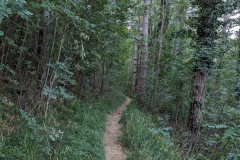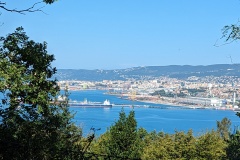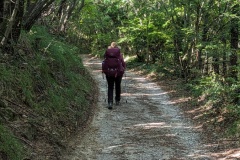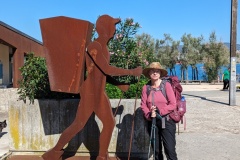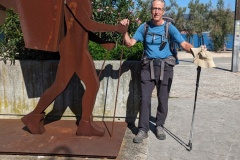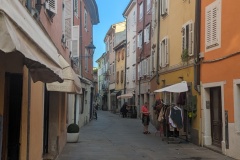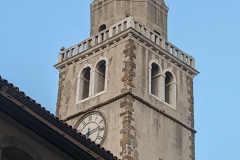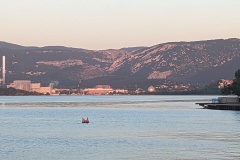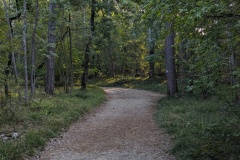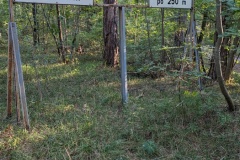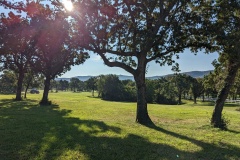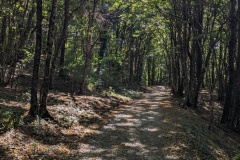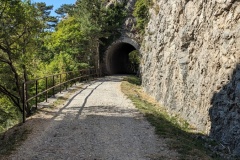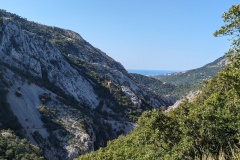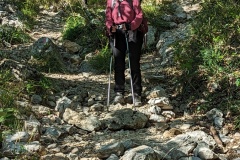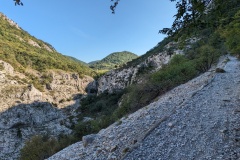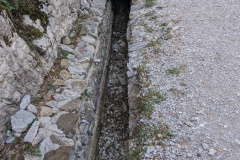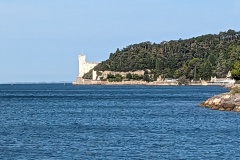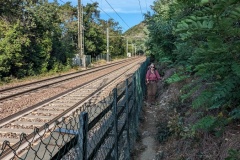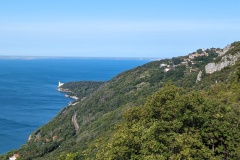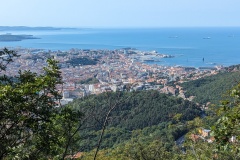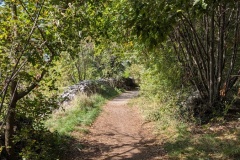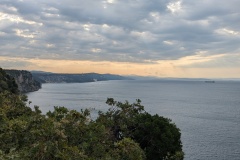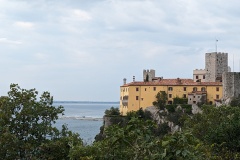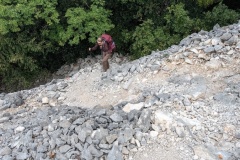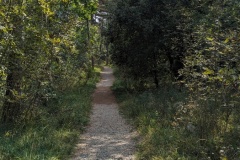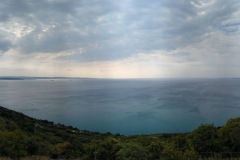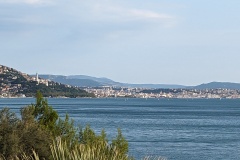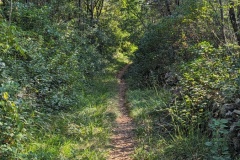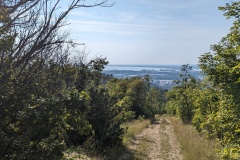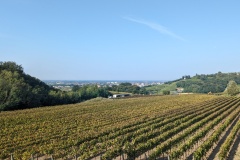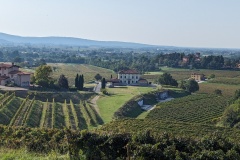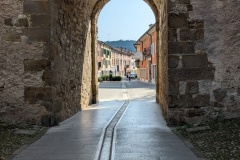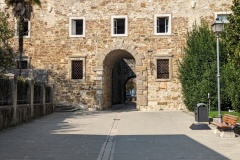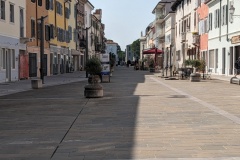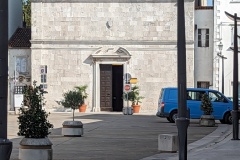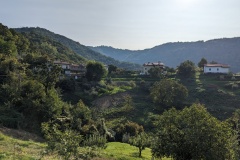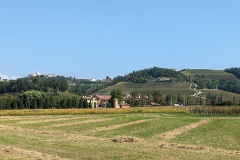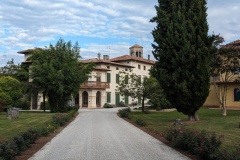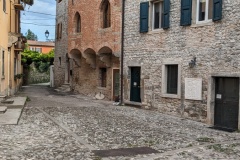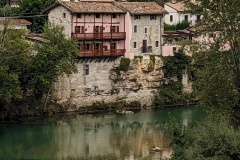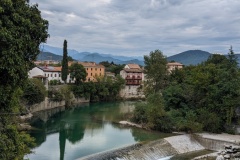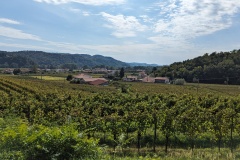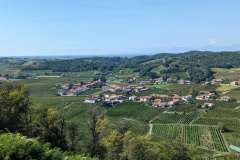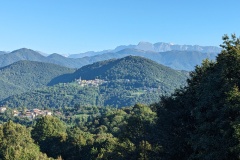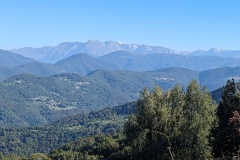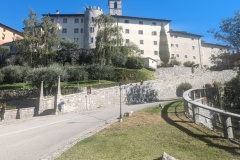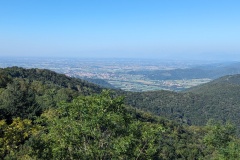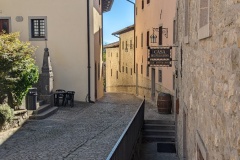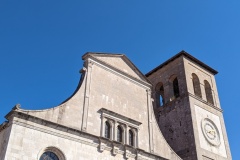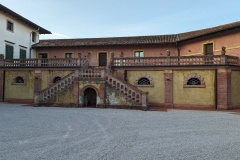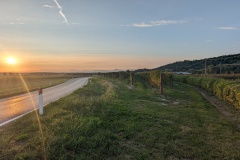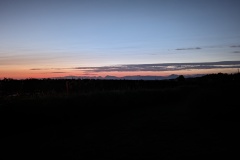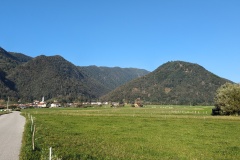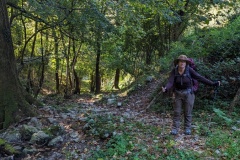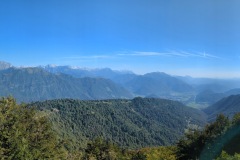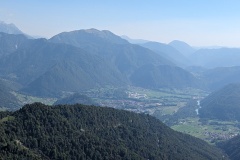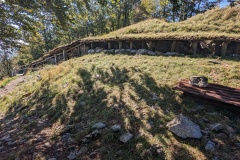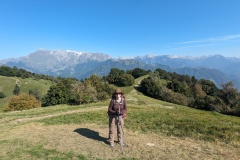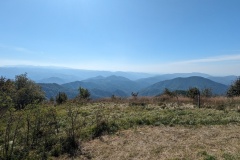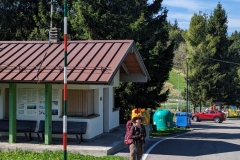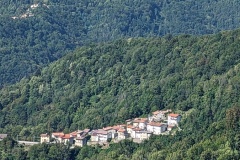We had breakfast in the restaurant across the street from our apartment. At 8 o’clock it was surprisingly busy for a Saturday morning; all men apart from one woman. The pastries were very good, as was the coffee.
We walked down the road to the next village, Dolina, and then set off on the path through the woods. The path narrowed as it wound its way round the hillside. After a while, we spotted some jackets and bags abandoned near the path. Others had reported even seeing torn up passports, so it is a route for illegal immigrants. Where they have come from, where they are going to, and why they abandon clothing were questions we debated but couldn’t answer. We passed through another small village, and then walked on a very stony path down to the valley. We walked along the road for a short distance and then onto another (flat) path. This opened out onto tarmac as it passed a large industrial estate. Other blogs had warned about this section as we made our way around a roundabout, across slip roads, and under the motorway, but it was well-signed and fairly safe. We then had the final climb of our walk, along a road which could have dated from Roman times to the 18th century. We reached the outskirts of Muggia, and had a couple of kilometres to walk downhill into the centre of town. We walked into the old town, through the piazza, past the cathedral, and there was the marker for the end of the trail. We’ve walked 599kms, and climbed over 18000m vertically in 36 days of walking. Muggia is a nice little town, but is dwarfed by Trieste directly across the bay. We will take the ferry over tomorrow and enjoy a couple of days there.
Max elevation: 200 m
Total climbing: 465 m
